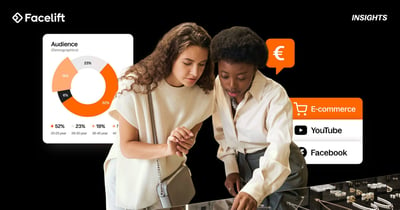Application Programming Interfaces, perhaps better known as APIs, have become a cornerstone of seamless integration and efficient communication between social media platforms and third-party tools.
APIs play a pivotal role in unlocking the potential of social media by enabling the smooth exchange of data and functionalities. In this article, we'll explain what APIs are and how they connect social media platforms to third-party tools.
We hope that this will give some clearer insight into what's going on under the hood with Facelift and quintly, our advanced data analytics and reporting tool!
What is an API and what does it do?
At its core, an API acts as an intermediary that allows different software applications to communicate and interact with each other, sort of like a bridge. It defines the methods and protocols by which requests and responses should be structured, facilitating the transfer of data and actions between systems. APIs essentially provide a standard way for developers to access the functionalities of a second platform without needing to understand its internal complexities.
How APIs work
APIs utilize requests and responses to function effectively. When a developer or third-party tool initiates a request to an API, it is making a call for specific information or action. The API then processes this request and sends back the relevant data or executes the action, returning a response to the requester. These responses are typically provided in structured data formats such as JSON or XML, making them easy to interpret and integrate into the requesting system.
Sound like a lot? We can break it down in simpler terms:
Facelift has access to most major social media networks via these platforms' APIs.
In order to make Facelift work at all, you have to connect it to your social media pages. To connect something, let's say Instagram, Facelift requires that you retrieve an API token from IG.
If you landed on this page because you want help connecting Facelift to your social media profiles, here’s a walkthrough.
This API "Token" is a string of characters that is unique to your social media page that grants Facelift access to it, sort of like a special password. Facelift's API tokens update periodically for your security. You can read more about how this works and why it matters here in this article.
Once you've made this connection, your Instagram data – or whichever network you're connecting – is accessible to the third-party platform, in this example, Facelift!
What can I do with APIs?
Social media platforms like Facebook, Twitter, Instagram, LinkedIn, and others, recognize the value of APIs in enhancing user experiences and expanding their ecosystems. By exposing their APIs to developers like Facelift and quintly, these platforms open up a world of opportunities for third-party tools to integrate and build upon their existing features.
Here are some key ways APIs help connected social media platforms and third-party tools:
- Data retrieval and analytics: This is where quintly shines! APIs allow third-party social media management tools to access data from different platforms in real-time. This enables businesses to monitor and analyze social media metrics, such as engagement rates, follower growth, and post reach, in a centralized manner.
- Posting and scheduling: Social media management tools leverage APIs to enable users to schedule posts, ensuring consistent and timely content delivery across multiple platforms. Through APIs, these tools can interact with the platform's publishing mechanisms, seamlessly automating the posting process. This is exactly what Facelift does.
- Social listening and sentiment analysis: APIs provide access to the firehose of social media data, granting third-party tools the capability to perform social listening and sentiment analysis. Brands can gauge public opinion, track mentions, and identify trends, helping them make data-driven decisions. One of our favorite tools for social listening are our good friends over at TalkWalker. Go take a look!
- User authentication: APIs also play a crucial role in user authentication. When a user logs in to a third-party social media management tool, the API facilitates secure authentication with the respective platform, allowing access to the user's social media accounts. This is a valuable security feature.
- Advertising and promotion: Social media platforms often have APIs that enable third-party tools to manage and optimize ad campaigns. This allows businesses to streamline their advertising efforts across different platforms and monitor campaign performance from a single dashboard.
- Customized features: Social media platforms may offer a set of standard features, but APIs empower third-party developers to create custom functionalities tailored to the unique needs of businesses and marketers. This is another area in which quintly's powerful reporting features take advantage of API technology.
Conclusion
APIs are what allows synergy between platforms and third-party tools, especially in the realm of social media management. They bridge the gap between social media platforms and third-party applications, fostering innovation and streamlining operations for businesses and other organizations.
It is thanks to APIs that social media management tools can access and utilize data, post content, handle communities, and even manage ad campaigns across various platforms, providing a comprehensive and centralized management experience.
Facelift and quintly are also powered by APIs that allow them to connect with social media platforms. quintly in particular provides its API separately from the software itself, allowing users to take advantage of quintly-powered data using their own third-party tools. If you're interested in learning more about how quintly's API and integrations can work for you, follow this link!





